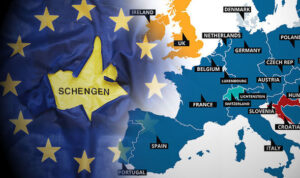
The Schengen Area Countries cover an area of 4,312,099 square kilometres with a population of over 400 million people. More countries are expected to join in the future. With the vast area occupied by the Schengen area countries, there is a lot to explore for those going on tourism. It is estimated that 1.3 billion Schengen border crossing is witnessed each year. This border crossing has helped to boost businesses, trades and tourism across the Schengen
At present, the Schengen Area Countries comprise 26 European countries. These countries have agreed that people visiting any of the Schengen area countries could gain access to other Schengen area using a unified visa called Schengen visa. This implies that with a Schengen visa you can tour any of the Schengen areas for a duration of no more than 90 days in any 180 days period. However, you should note that not all the EU countries are part of the Schengen area; and as such, the access will not be permitted for EU countries who are not part of the Schengen area countries.
Below are the 26 Schengen Area Countries:
Austria, Belgium, Czech Republic, Denmark, Estonia, Finland, France, Germany, Greece, Hungary, Iceland, Italy, Latvia, Liechtenstein, Lithuania, Luxembourg, Malta, Netherlands, Norway, Poland, Portugal, Slovakia, Slovenia, Spain, Sweden and Switzerland. Travelling to Russia or Ukraine? Get your tourist or business visa invitation HERE.
Note:
- The United Kingdom and Ireland are not part of Schengen area countries. The two countries have agreed on a common travel area. A Common Travel Area is an open borders area comprising the United Kingdom, Ireland, the Isle of Man, and the Channel Islands. A Schengen visa is not enough to visit this area. If you must visit any of these countries during your Schengen tour, you need a separate visa.
- Iceland, Lichtenstein, Norway and Switzerland are part of the Schengen area even though they are not members of the European Union.
- Bulgaria, Croatia, Cyprus and Romania are seeking to join the Schengen area. Until they have signed an agreement, you need a visa to enter.
- Albania, Andora, Armenia, Azerbaijan, Belarus, Bosnia & Herzegovina, Croatia, Cyprus, Georgia, Ireland, Kosovo, Macedonia, Moldova, Monaco, Montenegro, Romania, Russia, San Marino, Serbia, Turkey, Ukraine, The United Kingdom and Vatican City are European countries which do not yet belong to the Schengen area.
The Schengen border agreement brought:
- the abolition of internal border controls for participating countries,
- definition of uniform visa issuance procedures,
- operation of the SIS database,
- the establishment of a cooperating structure between internal and immigration officers
Internal Border Control among Schengen Area Countries
Border control was necessary to identify and verify the identity of people travelling to a country. There existed different border posts and border control by most European countries before the Schengen agreement was introduced. When the agreement was implemented, the border control by participating countries was abolished. Border posts were also removed to allow easy entry between participating countries.
Thus, it becomes easy to enter from one Schengen area country to another by road, by rail or by air without having to go through stringent border checks. This does not however exempt travellers from going around with a means of identification, like a national identity card or a passport. It also does not exclude tourists and visitors from security checks at the point of entry.
The removal of border posts and border control can be waved in some instances. This is provided in the Schengen border code for Schengen area countries. The Schengen border code makes it possible for member states to reintroduce border control in the case of internal security or issue of serious threat. This however will be a temporary border control and it will be removed once the issue has been resolved.
